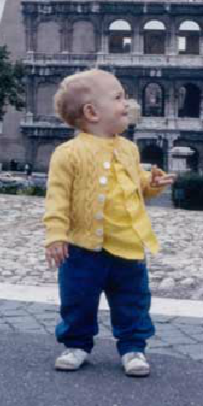This lateral safety net is comprised, anatomically, of the four smaller toes (metatarsals) and the outside of the heel (calcaneus). When standing atop our 4 strong points (the two arches), these lateral structures need to bear very little of our weight (much less than is commonly thought). The small toes touch lightly on the ground, Our sensitivity to this light touch enables us to easily recognize the additional pressure that comes when our weight falls off to the side (either intentionally by reaching out to that side, or unintentionally). Our sensitivity to this additional pressure enables lateral plantar muscles to immediatley guide us back to the strong part of the foot, using very little effort. The more sensitive we are, the less effort it takes; the less sensitive, the greater the effort. (When too much weight falls upon the outside of the foot, the plantar muscles are rendered useless. The bracing of large leg muscles becomes necessary to keep us from toppling further.)
Front and Back Safety Nets
We also have anterior and posterior safety nets. the anterior safety net is comprised of the tips of the toes, forward of the balls of the feet. The posterior safety net is the very back of the heel that bears our weight when we commit backwards. Again, it is our sensitivity to the pressure of our weight falling upon these structures that enables us to guide ourselves back to the strong part of the foot. The more sensitive we are, the less effort it takes; the less sensitive, the greater the effort.
